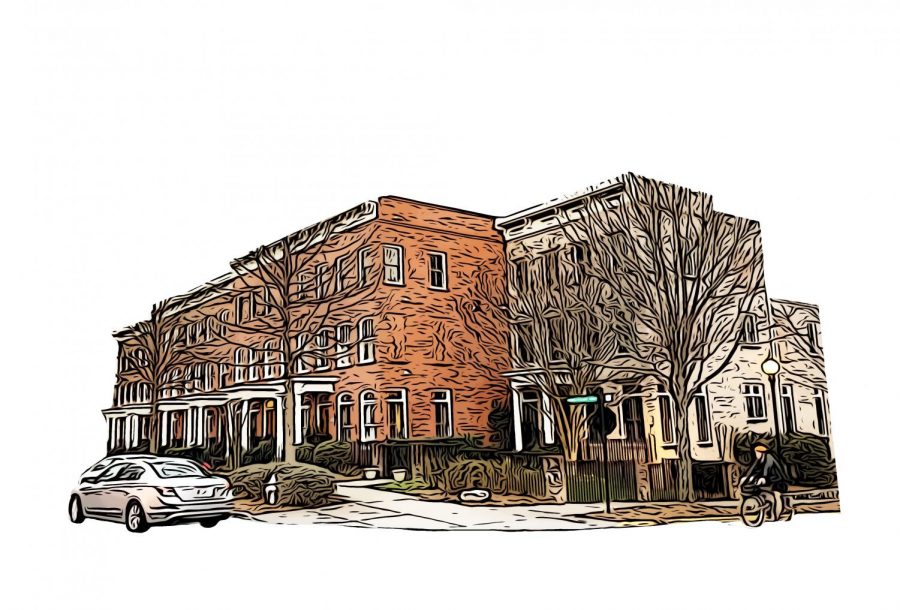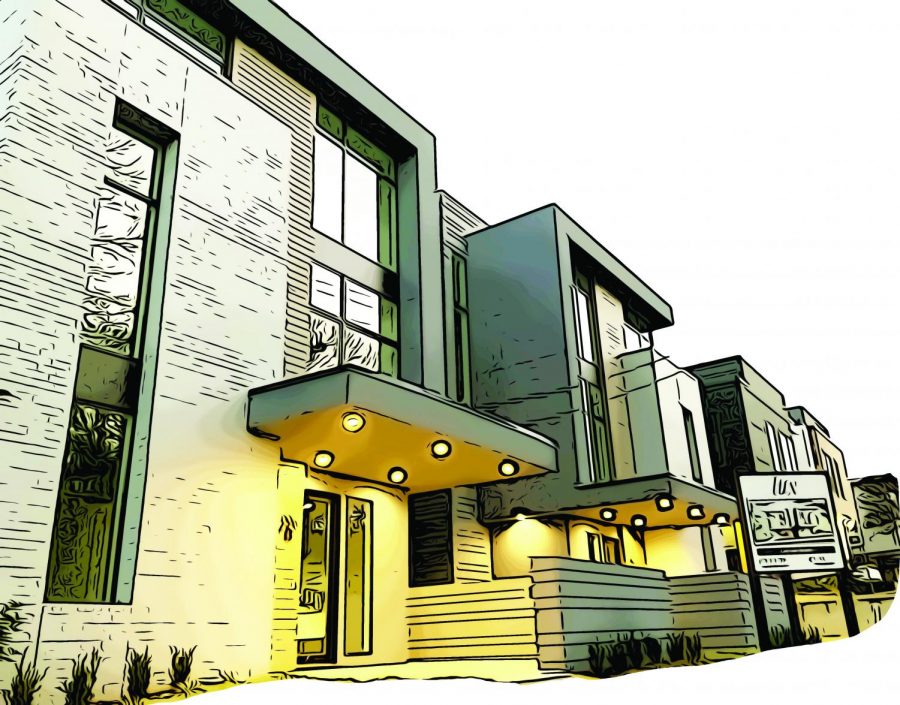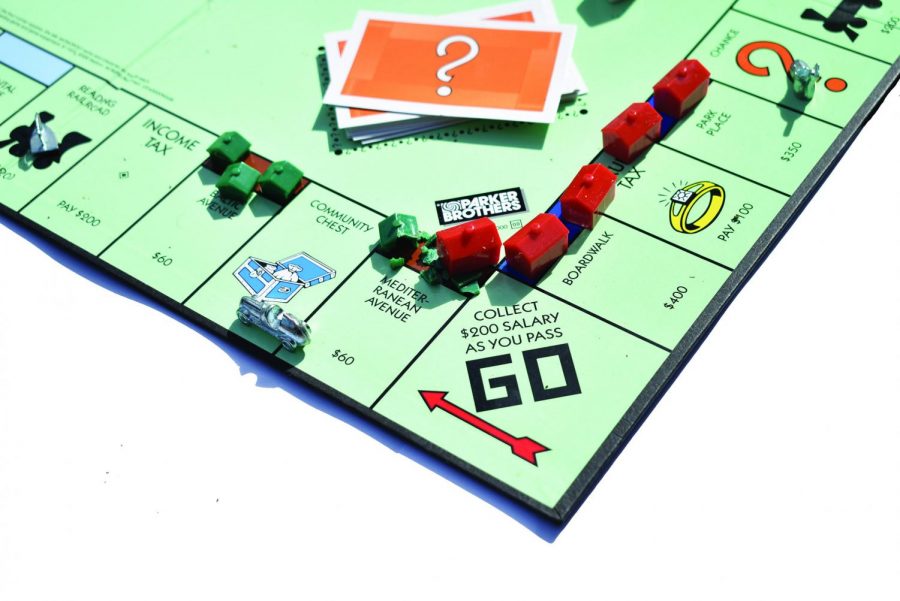Gentrification: Atlanta’s Displacement Game
February 14, 2019
In 2008, the housing market in the United States plummeted. A build up in subprime real estate loans caused the worst economic period in the United States since the Great Depression.
When the economy began to rebound in 2010, people felt relief and for the first time, in a long time, investment in real estate, industry and technology skyrocketed across the nation.
While the economic boom was welcomed with open arms, the recession’s closing created a new conundrum: gentrification. Defined as the displacement of people from neighborhoods within a city, generally poorer residents, gentrification is accompanied by an influx of middle-class or affluent people and a dramatic rise in real estate prices and improved neighborhood amenities, a trend that has swept the nation, particularly in Midtown Atlanta, where Grady is located.
Lauren Welsh is a founder of the Atlanta-based advocacy group ThreadATL, which aims to influence policy around city planning and design decisions. Gentrification breaks up communities, she said.
“Generally, gentrification means the displacement of people,” Welsh said. “When improvements happen in an area, and property values increase, it ultimately displaces people who can’t afford to live there anymore. What is happening across the country is there is more of a trend to move into urban areas. People are moving into cities … People are not moving into the suburbs the way they used to.”
While a national trend of urban movement has characterized housing changes over the past several decades, Atlanta’s gentrification embodies a completely unique narrative. The city was the first in the U.S. to develop public housing in 1936, and the first to completely close it down in the modern era.
“Not only is there the pressure of people moving in, but the city has put in infrastructure that makes it attractive for higher-end investment,” said Shirley Franklin, former Atlanta mayor and executive board chair of Purpose Built Communities. “We did not finance the affordable housing incentives while there was so much investment in the infrastructure.”
Welsh also notices the uniqueness of Atlanta’s gentrification.
According to a report issued by the U.S. Census Bureau and analyzed by Brown University, Atlanta is the fifth-fastest gentrifying city, with over 46 percent of census tracts undergoing gentrification. This trend has propelled the city to the top spot in income inequality across the United States, the US Census Burea’s American Community Survey found in 2018.
“What happens in a private market is that speculators come in and buy the cheap land in neighborhoods that are uninvested,” Franklin said. “The people who can afford the higher cost housing are those with higher incomes, not the 30 percent of the Atlanta population that lives at or below the poverty line.”
What this has meant for residents of Atlanta, is not only difficulties in buying homes but an influx of high-end development in response to an increased demand from more affluent residents.
While economic investment is essential in revitalizing communities, the city’s levels of private investment without regulation can have a net decrease in the social capital of a community.
“It really is robust economic investment in typically underinvested areas that subsequently changes the communities,” said Christopher Norman, president of Atlanta Land Bank Authority, a developer and manager of tax-foreclosed properties. “Everyone wants to have the Walgreens, Starbucks and dry cleaners, but the question is, does this have to come at the cost of others being pushed out of the community … the other part of gentrification is that if you are not already living in the neighborhood and it undergoes increased economic investment, then one’s ability to move into the neighborhood decreases without affordable housing.”
Tale As Old As Time
In order to combat the notion of Gentrification, the city of Atlanta has the ability to corral development in order to promote affordability within communities.
As many policy makers and advocates across the city note, the narrative of gentrification is far from new. Discriminatory real estate practices defined much of Atlanta’s early urban development such as redlining, the dividing of neighborhoods with highways and the transition of street names, as streets cross neighborhood boundaries, to further separate neighborhoods.
“We talk about gentrification in Atlanta as if it is something that has just started happening, but there have been policies that have been put in place that have really prevented the African-American population from building wealth through housing,” Welsh said. “A lot of white people were able to build wealth through housing because they were able to qualify for loans, and they buy a house, and the house rises in value, and they can sell it and buy another house.”
Practices such as redlining, or the refusal of lenders to lend money or show property to people in certain neighborhoods, created the seemingly segregated neighborhoods across the city.
“We already pushed certain people into certain areas based on their skin color and said that ‘you will not qualify to buy a loan for a house in this area,’” Welsh said. “Real estate agents specifically told white people to live in one place and black people to live in another.”
Welsh sees the results of Atlanta’s discriminatory real estate practices in structures beyond just neighborhoods.
“Look at the highways in Atlanta,” Welsh said. “Not many cities have a highway that goes right down the middle of the entire city, and it was put in the most prominently African-American area in Atlanta. We basically divided and demolished neighborhoods.”
Welsh also notices an underrepresented side to the city’s displacement narrative: senior citizens.
“You have people that have stayed in their homes for a really long time, and it’s not easy to move,” Welsh said. “No one is out there protecting those seniors. There’s no one spending time getting to know the seniors in the communities, literally knocking on doors and talking to them about programs that can keep them in their homes … You have to do this on a street level.”
Up and Coming: Atlanta’s Highlight Developments
An uptick in development around the city has increased the role of gentrification within the city as affluent developments push out lower income communities.
Projects such as the BeltLine, a multi-use trail running along one of the city’s former railway corridors, as well as the Mercedes-Benz Stadium that replaced the Georgia Dome in 2017, have come to characterize many concerns over Atlanta’s urban development. However, while many look to the BeltLine and see gentrification, Welsh views the development differently.
“Most people want to point at the BeltLine and say it’s the problem and it’s the reason for gentrification,” Welsh said. “The simple fact is, that if we had policies put in place around affordable housing, the BeltLine would not have caused it. We have not dealt with affordable housing in our city, really, ever. People have a tendency to use it in their campaign speeches, but no one is really putting a lot of effort behind passing legislation around it or funding to create more affordable housing.”
Welsh notes the BeltLine’s increase is density as one of the project’s largest strengths. But other projects are still seen perpetuating a lack of properly planned urban development.
Our economic development policy has a tendency to just say, ‘Hey, come here, and we will give you this significant tax incentive,’” Welsh said. “But there’s not a lot of time spent looking across all of the tax breaks that we are giving to stadiums and aquariums and Norfolk Southerns and NCRs and any of these other huge corporations. When does anybody sit down and look and [analyze tax breaks and gains in jobs]? A lot of these projects are done in isolation.”
Franklin also notices conversations over housing overshadowed by large developments.
“Now instead of investing a half a billion dollars in affordable housing, the [current mayor, Keisha Lance Bottoms] believes that we should invest a billion,” Franklin said. “Every year that this investment doesn’t get done, it just becomes more expensive to accomplish. The bottom line is that for eight years, the city council did not talk about affordable housing much at all. The only legislation that was passed was sponsored by Council member Andre Dickens, and it didn’t get anywhere until 2017.”
With the Mercedes-Benz Stadium recently hosting the 53rd Super Bowl, the city not only welcomed hundreds of thousands of visitors, but dug up some of the stadium’s role in Atlanta’s spotty urban development.
“The stadium went where there were two historic African-American churches. We bought them out,” Welsh said. “We bought them and said, ‘Hey, maybe you can move somewhere else.’ It actually changed the path of Martin Luther Drive … It disconnected people on the Westside of town from the Eastside of town … That’s what we do as a city. We create all these big, shiny projects to try to make ourselves look big, and we don’t invest in our people.”
The news outlet, “The Bitter Southerner,” continues the story of the effects of the stadium’s construction, describing stories of those who lived in the neighborhood called Lightning, which was demolished for the Georgia Dome.
While the stadium brought in jobs for many residents in the area, many point out the lack of concise regulation in building projects that contribute to some of the city’s urban disparity. Impact fees in construction are the fees the developer pays that go towards improving the area in which a project is put in place. Welsh notes that Atlanta’s impact fees were placed under general funds under former Mayor Kasim Reed, instead of a separate entity.
Welsh also points out the city’s dated zoning codes, which go back to the 1970’s, and how this has impacted development across Atlanta.
“There was a small development on DeKalb Avenue, an old industrial building, and the architects wanted to renovate it and put in a little restaurant and a few office spaces,” Welsh said. “But according to the 1970 zoning requirements, they were going to have to add a large number of parking spots. The neighborhood did not want to grant them a variance (an exception to not add those parking spots), and so they were going to have to tear down part of the building to add more parking. That zoning was put in even before a MARTA station, let alone the BeltLine.”
Efforts to combat gentrification, as well as poor urban development, have become a large voice in the city’s development. Welsh notices Planning Commissioner Tim Keane’s push to update zoning codes, as well as encouragement for more dense development.
“We are one of the least dense cities in the country, but people think because they are stuck in traffic that we are too crowded,” Welsh said. “Traffic is just an example of poor planning, it doesn’t mean we’re too crowded, it means we didn’t design our city very well.”
Looking Forward
Artist Rendering By Charlotte Spears
Various solutions have been proposed in order to walk the line between economic investment and gentrification and it seems that a joint city and community effort is the best way forward.
While gentrification and its perpetrators are deeply-rooted, many note potential for change within the city.
One successful method centered around affordable and sustainable housing used across the nation is named for an Atlanta neighborhood. The East Lake model was a successful intervention into a neighborhood, dubbed “Little Vietnam” for its immensely high crime rates around the former East Lake Meadows public housing project.
Through a cooperation of philanthropy, private and public investments, East Lake became a thriving community in Atlanta without the displacement caused by gentrification.
“The East Lake model ensures that as neighborhoods are redeveloped, there is a way for low-income and working people to continue to live in that community. It is a combination of private and public dollars to make this model work,” Franklin said.
The East Lake model has been successful in over 20 cities across the nation, yet is held back due to its entirely not-for-profit approach. In light of that approach, the city government itself is able to implement methods to keep housing affordable, such as placing limits on developers and controlling the public land bidding process. Much of this implementation falls on the effectiveness of city government and its willingness to cooperate.
“The Atlanta Housing Authority owns hundreds of acres of undeveloped land that has just been sitting there. The Housing Authority has every capability to say that companies bidding for the land must make a certain percentage of affordability into the development,” said Franklin.
In part, the City of Atlanta has worked in tandem with private and semi-governmental agencies to assist homeowners who would normally be priced out of a desirable neighborhood.
“Say, for instance, you don’t have enough money for a downpayment on a mortgage, then we can have financial assistance,” said Norman. “The Atlanta Land Bank programs allow for people to receive money for a downpayment if they live on the property for a certain period of time.”
Attention from the city on affordable housing is extremely important to tackle this issue. However, a one-sided approach to a topic as complex as gentrification will lead to nothing but a repetition of the problem.
“The way to solve the problem is to address the root of the problem, which is lack of education, discrimination on the job, disparities in wages and low wages,” said Franklin. “You have to address all of these things, unless you want to be back in these same situations in another 15 or 20 years. You will help one group of people but not the next.”
However, Welsh notes a unique characteristic of the city that holds the potential to curb some of Atlanta’s housing issues. Neighborhood Planning Units, or NPU’s, which were created by late former Mayor Maynard Jackson, the city’s first African-American mayor, as a way to get neighborhood voices to city officials.
“It is a very powerful tool that most cities don’t have,” Welsh said. “There’s a real potential to get more civic voice as a part of the planning conversation. Atlanta is a small city, so a few voices can make a difference … The challenge is who has the ability to participate, how to you get the more underrepresented voices of people who don’t have that time? I think that’s something the city really needs to grapple with.”
Overall, advocates and officials agree that public voice is one of the most important ways to begin enacting change for the city.
“We really have access, I just think we don’t use it enough,” Welsh said. “You can call your council member and sit down with him or her in their office anytime. People need to feel very comfortable doing that, because showing up in small city like this really makes a difference.”



